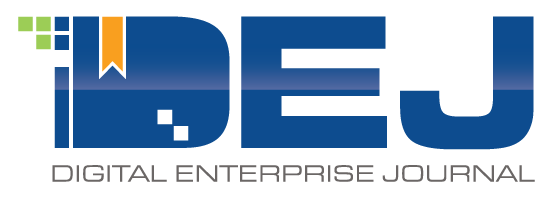In February of 2018, Digital Enterprise Journal (DEJ) published a research study on 17 Areas Shaping the IT Operations Market. DEJ just completed its 2019 research on key trends in this market and identified 10 areas that show the most significant changes over the last 12 to 18 months.
1 – Organizational changes needed. The research shows 41% of increase in number of organizations reporting organizational structure of their companies to be one of the key obstacles for effectively leveraging IT operations solutions. This obstacle mainly appears in two areas: 1) not getting the most out of IT operations solutions deployed; 2) being difficult to make investments in modern IT operations solutions due to the fact that they are not a good fit for their organization, they was it’s currently structured.
2 – No 1 opportunity is creating the business value. This time it’s for real. The research shows 37% increase in number of organizations that are reporting creating the business value to be the top driver for deploying IT operations solutions as compared to 2018. The key areas of business that they are looking to improve by deploying these solutions, surprisingly doesn’t include cost, but business outcomes such as customer satisfaction and responsiveness to market needs and changes.
3 – Increasing importance of user experience monitoring. 38% more organizations reported that Digital Experience Monitoring (DEM) solutions are the key area of IT operations where they are looking to invest as compared to the 2018. This comes as a result of several factors, the most significant of them being: 1) looking for IT monitoring tools to capture business metrics; 2) enabling customer-centric IT; and 3) importance of DEM solutions for digital transformation projects.
4 – Modern incident management becoming one of the key attributes of top performing organizations. DEJ’s 2018 IT operations study showed that organizations that are providing context and automation around their incident management strategies are reporting significant improvements in areas such as actionable tickets, user experience and operational cost. This year’s research shows that the importance of these solutions is trending further upwards as 69% of top performing organizations in this research are deploying key attributes of modern incident management such as lifecycle and centralized approaches, automation, contextual alerts, machine learning and algorithmic correlation.
5 – Monitoring capabilities becoming more of a challenge. The 2018 research shows that even though 82% of organizations reported improvements in their ability to collect IT performance data, only 38% experienced significant performance improvements. This year’s research shows similar numbers. In the last year’s study, that was contributed to the lack of context in which the data was presented and even though that still holds true in 2019 research, organizations are increasingly reporting that also increase in the number of monitoring blind stops is progressively more contributing to this issue.
6 – AIOps – more recognition, confidence and interest. The 2019 research shows 32% increase in number of organizations that are familiar with the term and value proposition of AIOps. The research also shows that organizations are having more confidence in AIOps solutions and are showing higher levels of satisfaction. However, 62% of organizations in 2018 research reported that it is difficult for them to identify differentiators between AIOps solutions and that number saw a marginal change in this year’s research (more about survey results specific to AIOps DEJ will cover in a follow up article).
7 – Context is still the king, but the bar has been set higher. DEJ’s 2019 research shows two key trends when it comes to context of IT data: 1) yes, the context is still the key difference maker in managing IT operations and its importance even further increased over the last 18 months; 2) areas where organizations are looking to leverage data from IT operations solutions goes well beyond traditional IT. As a result, organizations are not only looking to put data in the right context to be more effective in preventing or triaging IT performance issues, but they are also looking to leverage this data in the right context for business, digital enablement and security purposes.
8 – Automation getting a more strategic role. In 2018, organizations reported the significant importance of automation in areas such as reducing complexity or preventing performance issues and that trend shows a steady increase in 2019. More importantly, organizations are expanding automation capabilities to more use cases and capabilities (40% increase over the last 12 months) and reporting that automation has strategic importance for IT operations (42% increase).
9 – Centralized approach getting less adoption than it should. The 2018 research study revealed that 36% more users per IT FTE are being managed by organizations that are taking a centralized, “single pane of glass” approach as compared to all others. In the 2019 study, organizations are reporting strong interest in taking this type of approach, but their current deployments are lagging behind their strategies. As a result, organizations reported only a 19% increase in deploying these capabilities. A significant part of this challenge can be attributed to the point mentioned in section #1 – lack of alignment between technology deployments and organizational structure.
10 – Larger gap between top and average performers. The 2019 research shows that top performing organizations outperformed their peers by a significant margin. This year’s research shows that: 1) an increase in organizations that are able to achieve TPOs performance levels; 2) an increase in the performance gap between top performing organizations and all others; 3) some non-TPO organizations are deploying capabilities similar to that of TPOs, but with different results. The end game for these companies is creating a holistic strategy that includes both technology and organizations to take a business-centric approach and then reach out to find the right mix of capabilities for managing IT operations.
Summary:
One of the key conclusions of DEJ’s 2018 study was that IT operations has become an analytics, automation and data management game, which was a major departure from how this area has been run in the past. The market is still strongly trending in that direction and the research shows increasing interest in modern IT operations solutions. The research also shows major opportunity in modernizing monitoring capabilities, adapting to management of new technologies and building a better “data lake”. However, the business aspect of these solutions is becoming increasingly important for user organizations and is set to drive further growth of the market and become a key differentiator between technology vendors.
Regardless of underlining technologies they are providing or submarkets they are playing in, the market for IT operations solutions is becoming even playfield. The winners will be those whose solutions provide the strongest business value and lead to desired business outcomes.













